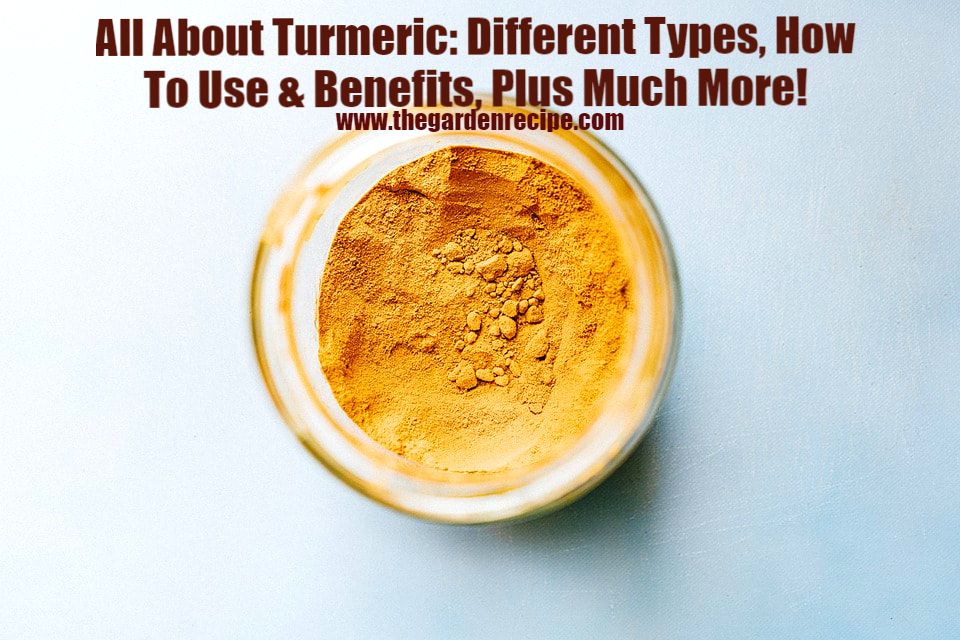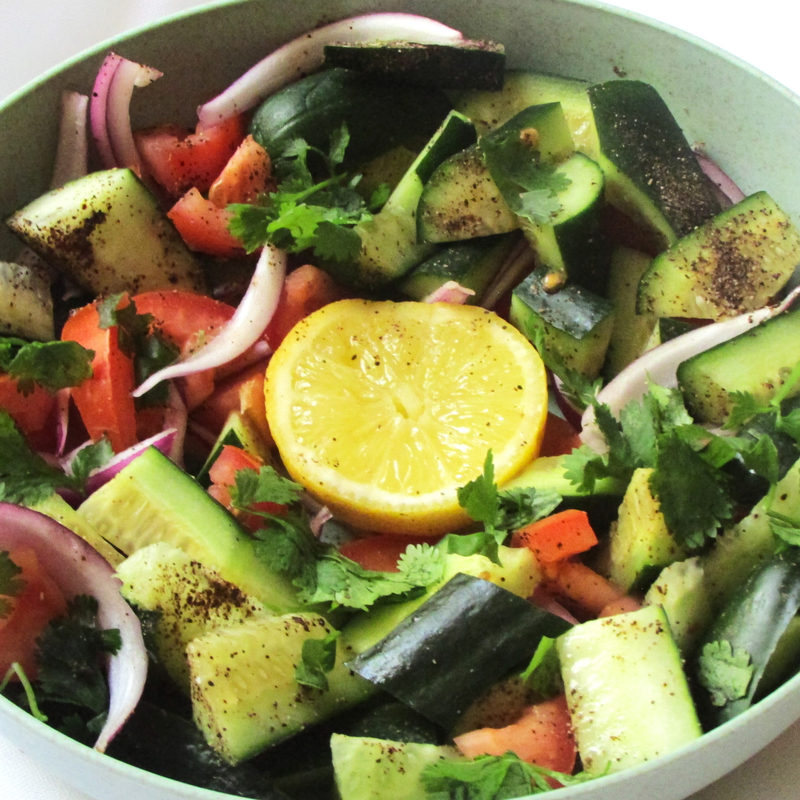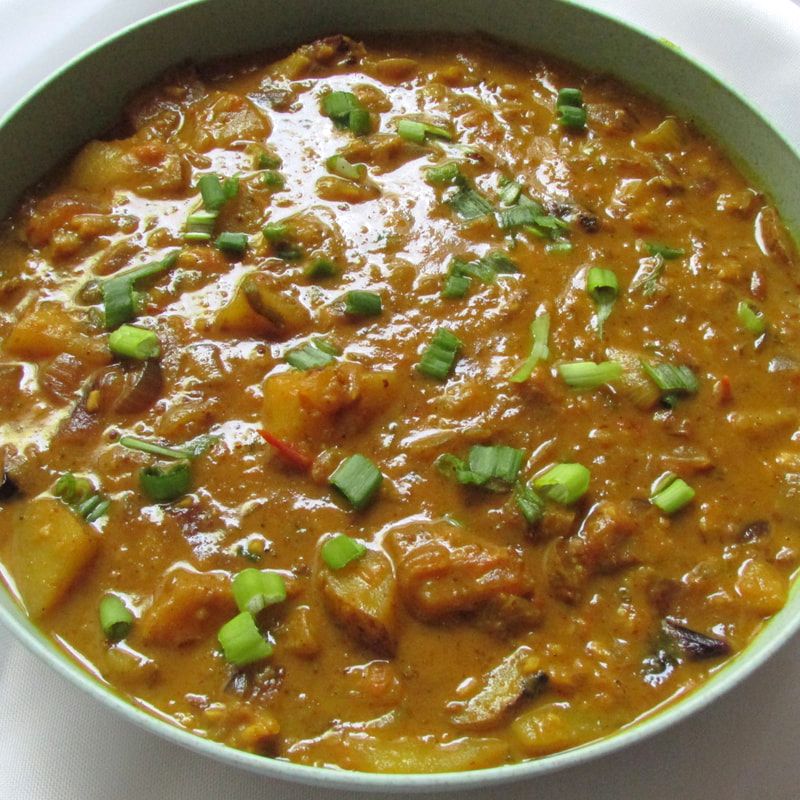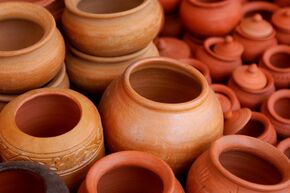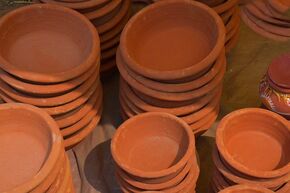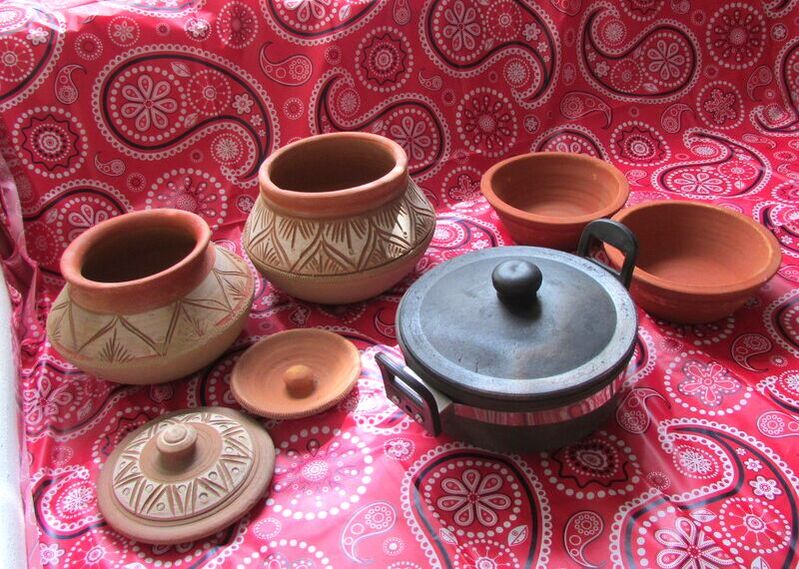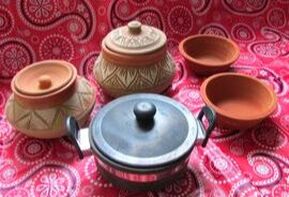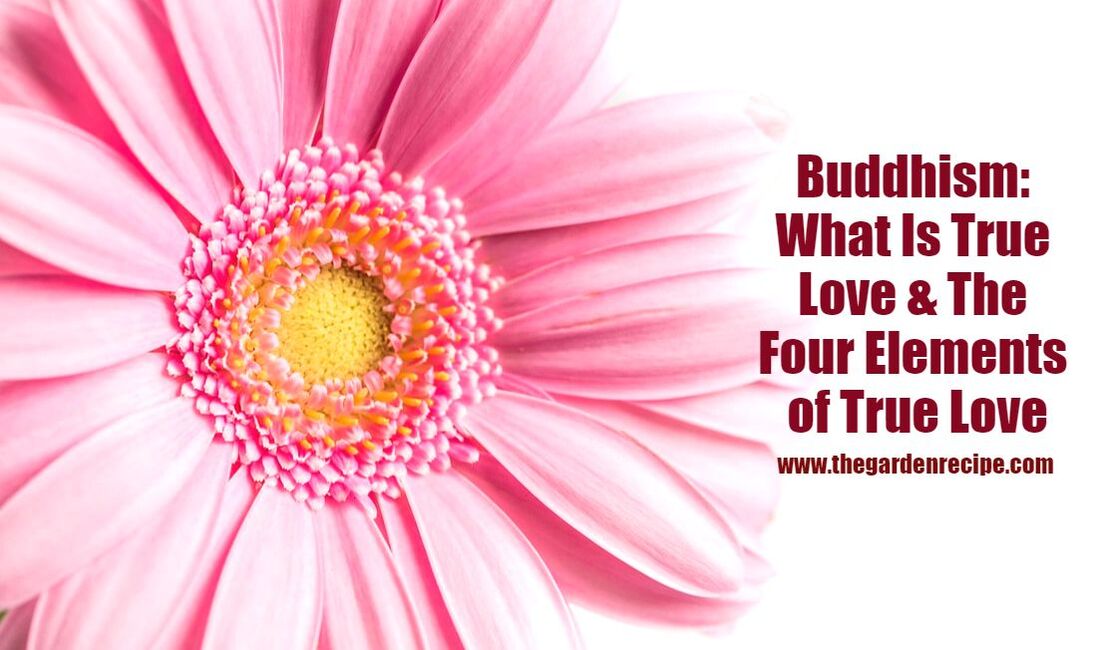|
What are the different types of turmeric and their health benefits, and how can each type of turmeric benefit you? Find out everything about turmeric in this article. Turmeric has taken the world by storm - with it's zillion health benefits and still many yet to be discovered. Luckily for me, being an Indian, I have been eating turmeric since the day I was born pretty much! Let's review some facts about turmeric that can help you decide which turmeric is best for you, what different kinds of turmeric are there and lot more!
Basics about Turmeric - Turmeric comes from the roots of the plant called Curcuma longa. When the fingers of this rhizome are grounded, that is what we call turmeric powder or ground turmeric. There are many varieties of turmeric and about 30 or so are identified and used in India. India is the biggest exporters of turmeric in the world. India exports turmeric both in powder form as well as oleoresin. Turmeric has many benefits thanks to its compound called curcuminoids, out of which, curcumin are the most important. Turmeric is anti-cancer, helps liver detox, is anti-inflammatory, helps with aches and pain, helps create bile, is rich in antioxidants, is considered a nootropic since it helps the brain with better cognitive function and memory, is heart-healthy, helps with better sleep, is great for arthritis sufferers and well, helps pretty much any condition that has inflammation at its root. Some fun facts about Turmeric - Turmeric is similar to ginger - both of their rhizomes look the same, and also, the conditions needed to grow both of them are the same. So, if you are growing turmeric in your garden, you can definitely grow ginger as well and vice versa! Turmeric is being used more and more as a food coloring due to consumer demand for more natural colors. Turmeric is also used by Indian textile industry as a coloring. Turmeric is considered an auspicious spice and is used for festivals and celebrations. In fact, in the Indian state of Odissa, when someone dies, the food is cooked without turmeric for 10 days (to symbolize mourning and grief). Turmeric is part of wedding rituals in India - both the bride and the groom get turmeric face masks applied on their faces as part of the pre-wedding nuptials. This is to ward off evil spirits, and to bless the couple with a happy and long lasting relationship. Since turmeric is also an excellent aid for glowing skin, turmeric has been part of Indian wedding traditions from time immemorial. Since the weddings can be stressful and can cause the bride to break-out in acne, the turmeric paste is applied to prevent such an ordeal before the wedding function. Turmeric ointments are sold everywhere in India - they are part of Ayurvedic wisdom, and Indians always keep turmeric ointments at home for its antiseptic and analgesic properties. Turmeric poultice is used in India for healing wounds, scars, cuts, tissue repair, cysts, boils, burns, swellings, pains, skin infections, and such. Turmeric Poultice Recipe - It is very easy to make turmeric poultice at home. All you need is some coconut oil, and turmeric powder. You can also add some ginger powder and a few drops of castor oil to make it more effective. Make a thick paste so you can apply it easily. Then, just wrap the area with some cotton cloth or bandage. Taste of Turmeric? Slightly peppery, bitter, warm and earthy. Turmeric around the world - Turmeric has reached immense fame and reverence, so to speak! It has touched every corner of the world, or maybe I should say, every cuisine. It is part of the famous Indian curry masala recipe as well as Moroccan seven spice blend. It has been used in African countries, Israel, Sri Lanka, Western countries, and well, pretty much all the rest. Turmeric leaves are used in Indonesian and Malay cuisine and turmeric shoots are used in Thai cuisine. Of course, Indians and Pakistanis use turmeric like there is no tomorrow! Since we were once the same country, our cuisine is pretty much the same and turmeric is very much a part of it and has been part of it since time immemorial. What is Turmeric called in India? Turmeric is called haldi (hull-d) in India. What are the different types of turmeric? There are four types of turmeric that are sold in markets for use (especially markets outside of India, as in India, one can find even more varieties plus these). These are - Alleppey, Madras, Wild Turmeric and White Turmeric. Benefits & uses of each type - Alleppey Turmeric (Curcuma Longa L.) - This turmeric is much darker in color than the Madras turmeric. Its curcumin content is somewhere in between from 5% to 6.5%. Because of it's higher curcumin content, the texture of alleppey turmeric is described as oily. In taste, it is pungent and bitter, but adds a lot of depth when added to curries, lentils, etc. It has an earthy aroma and is reminiscent of its close cousin - ginger. This one and the Madras turmeric are the ones consumed in India. Madras Turmeric - This is the light yellow one that is easily available and used worldwide in cooking. Its curcumin content is much less than the alleppey turmeric - about 2.5%. Wild Turmeric (Curcuma aromatica) - This is not consumed in India, but rather it is used for cosmetic reasons. It is bright yellow in color and has a very aromatic scent, and its benefits for skin are very impressive. It is often mixed with water or oil and applied on face and body in order to beautify the skin. It is anti-inflammatory and is a great tool for those who have acne, eczema, rash, wrinkles, fine lines, blemishes, etc. The main difference between wild turmeric and turmeric is that wild turmeric is extremely aromatic and is mostly used for cosmetic reasons in India. Hindi Name - Amba Haldi or Kasturi Manjal White Turmeric (Curcuma zeodaria) - This turmeric is white - it has no yellow in it. It is also used for cosmetic reasons and is a better option than wild turmeric since it does not stain the skin or clothes. White turmeric is rich in antioxidants and is therefore very helpful in skin care. It is a natural way to beautify skin - unlike the commercial products filled with chemicals, artificial scents, and neuro- and endocrine disrupting toxins. You can apply it mixed into a paste with some water or oil, massage for a few minutes and wash. Both the wild turmeric and white turmeric are known for removing facial hairs since turmeric weakens the hair follicles and prevents the growth - a great tip for those who have excessive facial hair and want a natural solution. Just make sure to not use near the eyes or the eyebrows. Hindi Name - Kapoor Kachri Best way to consume turmeric - Add turmeric to any recipe - it's that simple! Add turmeric in the beginning of the cooking process so that it cooks well and blends with the other spices and flavors of the recipe. Use some good healthy fats like coconut oil and mustard oil when cooking with turmeric as that always helps to enhance the absorbability of turmeric into the cells. You can also enjoy some turmeric in my warm Turmeric Milk Recipe w/Spices. Adding turmeric to some beans, vegetables, lentils, rice dishes adds amazing color and flavor. Add some black pepper as that will help the turmeric to get absorbed better in your body. Black pepper, due to piperine, helps the absorption of turmeric by up to 2000% Remember this - Turmeric + Healthy Oils + Black Pepper..:) On top of this wisdom, I suggest after finishing this article, you hop on to the 'Recipes' section! What can be better than having all this wisdom in a form of amazing recipes? You are lucky - almost all my recipes have turmeric and so, you have plenty to choose from, plus, videos to guide you step-by-step! Take advantage of this amazing opportunity and start adding turmeric along with many other spices I teach about..:) Where to find? Nowadays, you can find turmeric in any grocery store and of course, in your local Indian or Pakistani stores. You can also find it in some Sri Lankan as well as Middle-Eastern stores. Best way to store Turmeric? For fresh dried root - You can actually keep fresh turmeric root in an open air container, just like onions and garlic. You can also keep it in the fridge to make it last longer than 2 weeks, and if kept in the freezer, it will last up to 6 months. If keeping it in the fridge or freezer, make sure it is in an airtight bag or container, like a glass mason jar. Whether you store it on the kitchen counter or fridge, make sure it is absolutely dried and there is no moisture on the root. For turmeric powder - Keep just as you keep your other spices - in an airtight jar in kitchen cabinets. Make sure it is stored away from heat, humidity or sunlight and you keep it in a place which is cool, dry and dark. It will keep well for as long as a year or more - this I can tell from my personal experience too, where I have never had turmeric powder go bad or rancid or get bugs! Yes! You can use your turmeric powder for up to a year or more. Which one is better - fresh turmeric root or turmeric powder? This answer may surprise you, as many do not know still, but both have different advantages. Turmeric powder is better, especially if you are interested in getting health benefits from turmeric, and you want to use it in your recipes. Turmeric powder has been thoroughly dried, before being grounded and this leads to less water content and more active components. This is also the reason why you would use less turmeric powder in your recipes, as opposed to when using fresh turmeric root. So, if you are not someone who loves turmeric or who is just starting to cook with spices, I would suggest you go with turmeric powder. You will get the benefit of ease of use as well as health benefits. Turmeric Root - It has more curcumin, the anti-inflammatory compound in turmeric, and has active oils in the root, so yes, it will be more pungent, bitter, sharp, and healthier than the turmeric powder. If you are having some health issues like cancer, then definitely go for fresh turmeric root. And of course, if you like grating the fresh turmeric root every time and don't mind the pungent taste, enjoy it! Another benefit to using fresh turmeric root is that it is unadulterated, whereas the powder is easy to adulterate with artificial colors and what-not. Of course, you can always buy your turmeric root powder from a trusted, organic, ethical seller but if not, go for fresh turmeric root. We Indians, use turmeric powder in all our cooking, because for one thing, we are eating turmeric all-the-time; it is continuously going in our bodies so no need for the hassle that comes with the fresh turmeric root! So, now, you decide which option is best for you!. If using fresh root, make sure you use less than what the recipe requires for the powder - about half the amount and adjust. This sums up our article on Turmeric. Ref. (1). Ref. (2). Ref. (3) To eating more turmeric! -Somyata
0 Comments
Leave a Reply. |
Quick Recipes for You Indian Cucumber Salad
Potato Curry in Coconut Milk
Clay Pot Series Videos Clay Pots Buying Guide in India
Bringing Clay Pots from India to US
My Beautiful Clay Pots REVEALED!
Which Clay Pot is Right for You?
Some Helpful Articles Ayurvedic Tips for Digestion
Buddhism: The Four Elements of Love
Buddhism: What Is Metta Meditation?
|
The Garden Recipe - Subscribe To The Newsletter HERE
HOME HEALTH SPIRITUALITY SEX RECIPES INGREDIENTS COACHING CONTACT REVIEWS TGP
DISCLAIMER TERMS & CONDITIONS PRIVACY POLICY
DISCLAIMER TERMS & CONDITIONS PRIVACY POLICY
Copyright ©2023 THE GARDEN RECIPE, LLC
All Rights Reserved
All Rights Reserved

